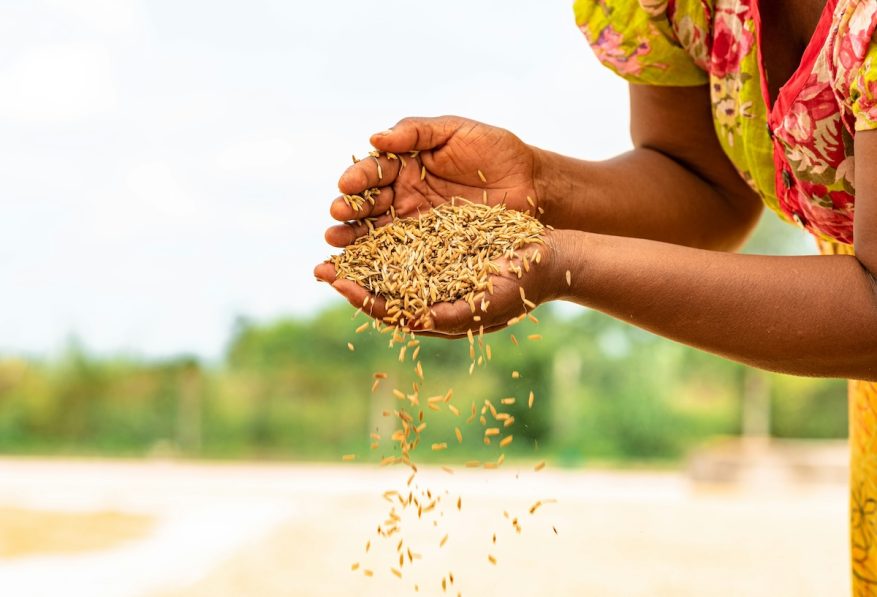
Spreading charcoal that’s made from crop waste has improved soil quality and increased harvests on a pilot project with farming communities in south western Burkina Faso, a research project has found.
The research was conducted as part of SustInAfrica, an innovative EU-funded Horizon2020 project that has brought together universities, farming institutions and non-governmental organisations like Self Help Africa, with the aim of improving smallholder farming productivity in climate vulnerable regions of Africa.
Since 2022, Self Help Africa and the University of Dédougou in Burkina Faso have been piloting the use of alternative organic soil enhancers for soil and crops – including biochar and dolomite – that are more accessible, cost-effective and climate-friendly through research trials held in Satiri.
Biochar is a type of charcoal made from burning organic material like crop waste in a low-oxygen environment. It is used to improve soil health, especially by holding water and nutrients; reducing the need for chemical fertilisers; and storing carbon, helping to fight climate change. Similarly, dolomite is a natural mineral (calcium magnesium carbonate) used to correct soil acidity, and add calcium and magnesium to the soil – both of which are essential for plant growth.
Tests carried out in multiple villages within Satiri, a commune in southwestern Burkina Faso affected by insecurity, confirm clear improvements in soil quality and health, as well as the amount of crops grown, where biochar and dolomite were used.
“So we can easily see that more cereal has been produced and is available for family granaries and there’s been a considerable reduction of the lean period that is usually observed during the dry season,” explained Paul André Traore, Country Director for Self Help Africa in Burkina Faso.
The trials have been shared with the project’s multiple partners, as well as local farmers, to capture their feedback on the new methods.
You can read the original report on this work, in French, here.


